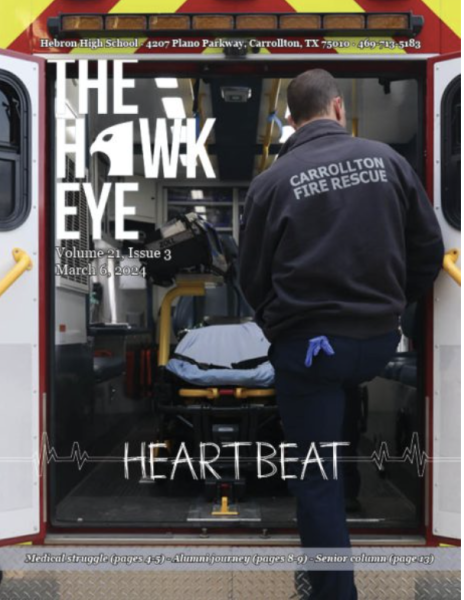Facts and Figures: Suicide lessons greet mixed feelings
May 8, 2015
Holding spot number 10 of the most depressed populations in the United States, Texas legislation decided to release House Bill 1386 in order to counteract the rising numbers of suicide attempts amongst young people. Specifically, through a series of fact-driven lessons to increase awareness among middle and high school students.
Over the summer, the district put together a board of counselors with the purpose of creating interactive lessons in order to teach students about topics such as depression, suicide and anxiety, called Helping Every Living Person (HELP).
“Every high school, elementary and middle school in the state should be doing these lessons,” head counselor Tracy Shinkle said. “The lessons are not necessarily exactly the same structure as our lessons, however, every district should be presenting the underlying content of each lesson in however they choose to present it.”
Beginning Jan. 1, the curriculum has been released monthly, each lesson focusing on a different aspect of mental health in young people.
“The suicide talks are more like prevention lessons for those going through issues, and they kind of advise you on what you should do and what not to do,” sophomore Ashley Kurian said.
In the last 15 years, suicide rates have increased by over 20 percent, and has become the second-leading cause of death among young people. Causing alarm among Texas legislators, the act and curriculum was designed to counteract the particularly harmful effects of adolescent depression, for not only students, but teachers as well.
“As a teacher I’ve seen … things that I could do to help students,” English teacher Julie Cummings said. “So it’s a way for us to be able to reach out to those students or friends to reach out to students, and it’s a way for us to help where we’ve never been able to or know what to do to help.”
Teachers were chosen to present the curriculum because of the close-working relationship they often have with students. However, sophomore Ashley Kurian said teachers were unqualified to relay the information.
“Why would you make a math teacher a counselor?” Kurian said. “Why would you make a science teacher a counselor? You want someone more qualified to come in [to class] and talk.”
However, the program is specifically designed so teachers will not have to act as counselors. With fact-driven PowerPoints and little room for interpretation, these lessons are designed to be strictly informational.
“As far as the actual lesson, it was more kind of, here’s the facts of everything and present it,” Shinkle said. “However, if a student were to come up to the teacher and say, you know, ‘I feel like I’m suicidal,’ or, ‘I’m very depressed,’ then the teacher has the opportunity to either themselves decide, do I want to talk with this student or take them down to the counselor.”
While a good idea in theory, Kurian feels that the factual approach of the lessons is not effective.
“For me, it’s not beneficial,” Kurian said. “But also, I think it depends on how your teacher presents [the lessons], because some teachers may get uncomfortable like, by people asking them things. So I feel like for people who actually go through these things, it’s not beneficial.”
While some students doubt the effectiveness of the program, Cummings holds high hopes for the curriculum.
“I hope it saves lives,” Cummings said. “I mean that’s what it’s for, is to save lives. I would hope kids take it seriously or at least give the appearance that they take it seriously. I hope people just don’t glaze over something so serious as this, that it is something treated with a respectful manner and kids just aren’t left in the dust because they don’t know how to handle themselves or students that are struggling.”







